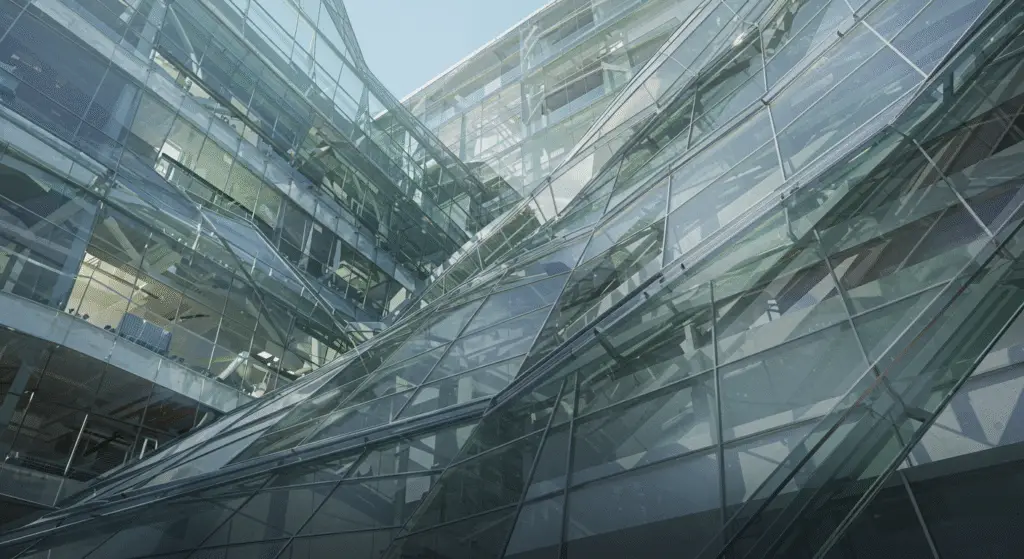
What is structural glass?
In the ever-evolving world of architecture and construction, one material has emerged as a true game-changer, transforming the way we design, build, and experience the structures that shape our built environment. That material is structural glass – a remarkable, multifunctional substance that seamlessly combines exceptional strength, transparency, and aesthetics, opening up new realms of creative and engineering possibilities.
Once relegated to the realm of decorative embellishments and non-load-bearing applications, structural glass has undergone a transformative evolution, becoming an essential component in the design and construction of some of the most iconic and innovative buildings, bridges, and infrastructure worldwide. From the towering, all-glass skyscrapers that redefine urban skylines to the sleek, transparent facades that blur the boundaries between indoor and outdoor spaces, structural glass has become a cornerstone of modern architecture, engineering, and design.
In this comprehensive article, we will delve into the world of structural glass, exploring its unique properties, the cutting-edge technologies and techniques that enable its use, and the profound impact it has had on the built environment. We will examine how structural engineers and architects are harnessing the power of this remarkable material to push the boundaries of what is possible in the realms of structural design, energy efficiency, and visual elegance, ultimately transforming the way we interact with and experience the spaces we inhabit.
The Rise of Structural Glass: From Decorative to Integral
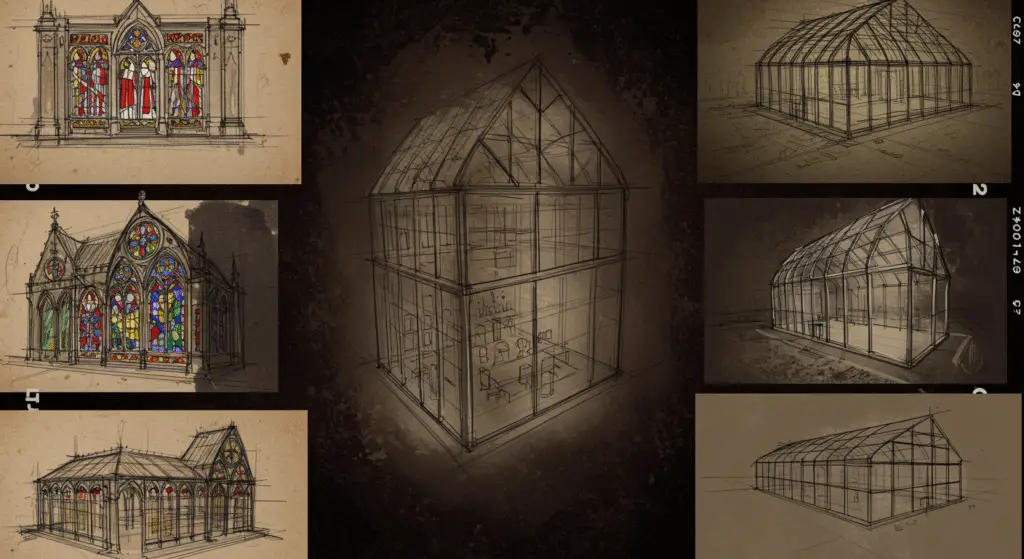
While the use of glass in construction has a long and storied history, dating back to ancient civilizations, the emergence of structural glass as a transformative force in the built environment is a relatively recent phenomenon. Traditionally, glass was employed primarily for non-load-bearing applications, such as windows, skylights, and decorative elements, with its fragile and brittle nature limiting its use in more structural roles.
However, as advancements in materials science, manufacturing processes, and computational design techniques have evolved, the capabilities of structural glass have been dramatically expanded, allowing it to transcend its historical limitations and become an integral component in the creation of some of the world’s most innovative and visually striking structures.
At the heart of this revolution in structural glass lies the development of specialized glass compositions, tempering and lamination techniques, and advanced structural systems that have imbued this once-fragile material with exceptional strength, durability, and versatility. Through the careful engineering and integration of features like tempered and laminated glass, reinforced glass panels, and advanced structural glazing systems, structural glass has become a viable and increasingly prevalent choice for load-bearing applications, enabling architects and engineers to realize designs that were once considered impossible.
One of the most significant advancements in the field of structural glass has been the development of laminated glass, a composite material composed of two or more layers of glass bonded together with a flexible, transparent interlayer, typically made of polymer or resin. This configuration not only enhances the overall strength and impact resistance of the glass but also ensures that, even in the event of breakage, the shattered glass fragments remain securely held in place, reducing the risk of injury and property damage.
Another crucial innovation in the world of structural glass is the use of tempered glass, a heat-treated or chemically-strengthened variant that is up to five times stronger than standard annealed glass. By subjecting the glass to a carefully controlled heating and cooling process, or by applying a specialized chemical treatment, the internal stresses within the material are redistributed, resulting in a final product that is significantly more resistant to breakage and capable of withstanding higher levels of compressive and tensile forces.
These advancements in glass composition and manufacturing have paved the way for the development of advanced structural glazing systems, which integrate tempered and laminated glass panels into innovative framing and support structures. These systems, which can be designed to span vast distances and support significant loads, have become instrumental in the realization of some of the most iconic and awe-inspiring architectural feats of the modern era.
The Structural and Aesthetic Benefits of Glass
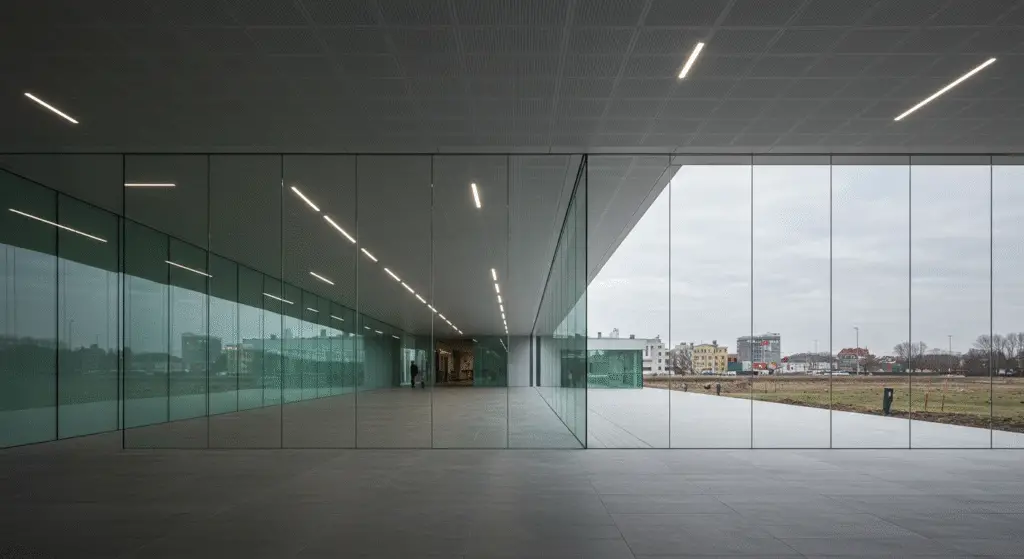
As structural glass has evolved, its applications in the built environment have become increasingly diverse and impactful, transcending its historical role as a purely decorative or supplementary building material. Today, structural glass is being employed as a primary load-bearing element in a wide range of structures, from towering skyscrapers and expansive bridges to cantilevered balconies and transparent facades.
One of the primary advantages of using structural glass is its exceptional strength-to-weight ratio, which allows for the creation of lightweight, slender, and visually striking structural elements that can effectively support significant loads without compromising the overall aesthetic appeal of a building or structure. By leveraging the inherent compressive strength of tempered and laminated glass panels, structural engineers can design elements like transparent curtain walls, floor-to-ceiling windows, and even load-bearing structural beams and columns that seamlessly integrate into the overall architectural vision.
In addition to its structural capabilities, structural glass also offers a range of aesthetic and functional benefits that have made it a preferred choice for architects and designers. The material’s transparency and light-transmitting properties can create a sense of openness and seamless connectivity between indoor and outdoor spaces, blurring the boundaries between the built and natural environments. This can lead to enhanced daylighting, improved visual aesthetics, and a heightened sense of spatial awareness and connection for building occupants.
Furthermore, the versatility of structural glass allows for a wide range of creative and expressive design possibilities. From the sleek, minimalist aesthetic of all-glass curtain walls to the dramatic, sculptural forms of cantilevered glass structures, this material has become a canvas for architectural innovation, enabling designers to push the boundaries of what is visually possible.
One exemplary case of the creative and structural potential of structural glass is the iconic Louvre Pyramid in Paris, France. Designed by renowned architect I.M. Pei, this striking, triangular glass and steel structure serves as the main entrance to the renowned Louvre Museum, seamlessly integrating with the historic, classical architecture of the surrounding buildings. The Louvre Pyramid’s innovative use of structural glass, supported by a complex network of steel framing, has not only become an instantly recognizable landmark but also serves as a testament to the transformative power of this material in the world of architecture and design.
Structural Glass and Sustainable Design
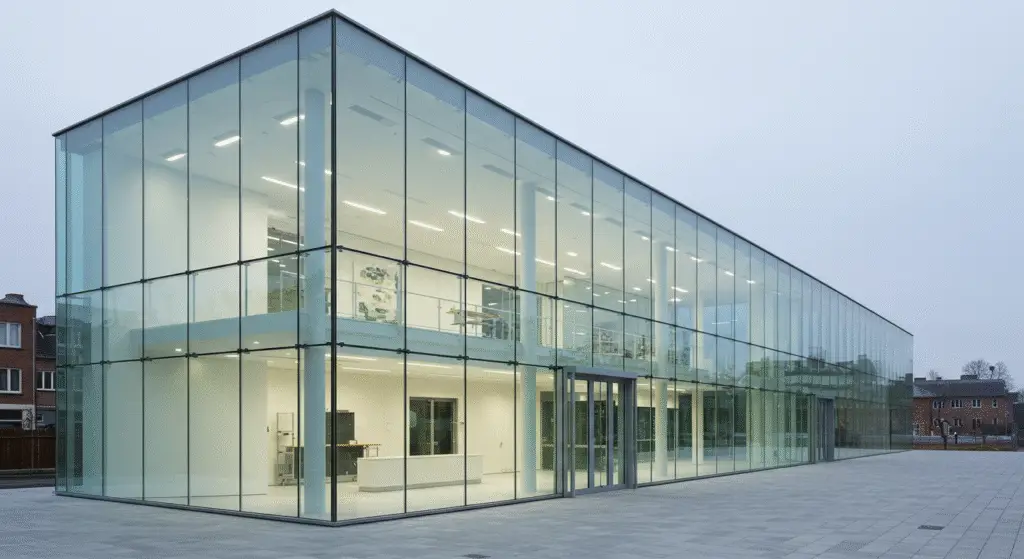
As the global emphasis on environmental responsibility and energy efficiency continues to grow, the role of structural glass in the pursuit of sustainable design and construction has become increasingly critical. By harnessing the unique properties and capabilities of this remarkable material, architects and engineers are developing innovative solutions that can help reduce the environmental impact of the built environment while also enhancing the overall performance and functionality of structures.
One of the primary ways in which structural glass contributes to sustainable design is through its ability to optimize daylighting and passive solar gain. The transparency and light-transmitting properties of glass can help to reduce the reliance on artificial lighting, lowering energy consumption and the associated carbon emissions. Furthermore, the strategic placement and orientation of structural glass elements, such as curtain walls and skylights, can be leveraged to harness the warmth of the sun during colder months, while also providing effective shading and insulation to mitigate heat gain during warmer periods.
In addition to its daylighting benefits, structural glass can also play a crucial role in the integration of renewable energy technologies, such as photovoltaic (PV) glazing systems. These specialized glass panels incorporate thin-film solar cells that can generate electricity from the sun’s rays, transforming the building envelope into a decentralized power-generation system and contributing to the overall energy efficiency and self-sufficiency of the structure.
Beyond its energy-saving potential, structural glass also offers advantages in terms of material sustainability and longevity. Unlike many traditional building materials, glass can be infinitely recycled without compromising its structural integrity or performance characteristics, making it a highly sustainable choice for construction. Additionally, the exceptional durability and low-maintenance requirements of structural glass can extend the lifespan of a building, reducing the need for frequent repairs or replacements and minimizing the environmental impact associated with construction waste and resource depletion.
One exemplary case of the integration of structural glass and sustainable design is the International Criminal Court building in The Hague, Netherlands. Designed by architect Francine Houben, this striking, all-glass structure features a highly efficient, double-skin façade system that combines high-performance insulating glass with integrated PV panels, enabling the building to generate a significant portion of its own electricity while also providing effective thermal regulation and daylighting.
As the global community continues to grapple with the pressing challenges of climate change and the need for more sustainable built environments, the role of structural glass in the pursuit of energy-efficient, environmentally responsible design will only become more critical. By leveraging the unique properties and capabilities of this remarkable material, architects and engineers are shaping a future in which the built environment is not only visually compelling but also functionally and ecologically harmonious with the natural world.
The Future of Structural Glass: Innovations and Advancements
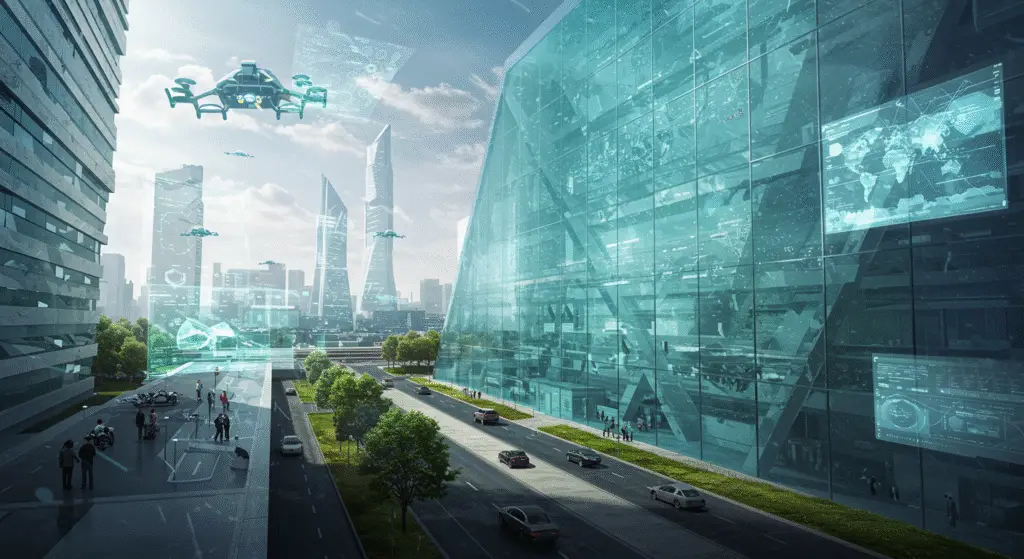
As the use of structural glass in the built environment continues to evolve, the pipeline of innovative applications and technological advancements in this field is growing ever more robust and exciting. From the development of new glass compositions and manufacturing techniques to the integration of smart, responsive systems and the exploration of novel structural configurations, the future of structural glass promises to be one of continued transformation and impact.
One area of particular interest in the world of structural glass is the exploration of advanced glass compositions and coatings that can further enhance the material’s performance and functionality. This may include the development of self-cleaning, anti-reflective, or even self-tinting glass panels that can dynamically adjust their light transmittance and thermal properties in response to environmental conditions or user preferences.
Additionally, researchers and engineers are actively exploring the integration of embedded sensors and smart technology within structural glass systems, enabling real-time monitoring of the glass’s structural integrity, environmental conditions, and energy performance. This could lead to the creation of “intelligent” building facades that can automatically adjust their properties to optimize energy efficiency, occupant comfort, and overall building management.
Another exciting area of innovation in the field of structural glass is the exploration of novel structural configurations and load-bearing systems. As the material’s strength and versatility continue to evolve, architects and engineers are pushing the boundaries of what is possible, experimenting with cantilevered glass structures, complex curved or funicular forms, and even the integration of glass into hybrid systems that combine it with other high-performance materials like carbon fiber or advanced composites.
One particularly intriguing example of this innovative approach to structural glass is the proposed design for the Jeddah Tower in Saudi Arabia, which, when completed, will become the world’s tallest building. Designed by the renowned architecture firm Adrian Smith + Gordon Gill, the tower’s exterior will feature a striking, all-glass curtain wall system that not only serves as a primary load-bearing element but also incorporates advanced solar control coatings and integrated PV panels to enhance the building’s energy efficiency and sustainability.
As the global demand for innovative, high-performance, and environmentally responsible building solutions continues to grow, the role of structural glass in shaping the future of the built environment will only become more pronounced. By harnessing the latest advancements in materials science, computational design, and construction techniques, architects and engineers are poised to unleash a new era of structural glass-enabled architecture and engineering that will redefine the way we conceive, construct, and experience the spaces we inhabit.
The Transformative Power of Structural Glass
In the ever-evolving landscape of architecture, engineering, and design, structural glass has emerged as a true game-changer, a material that has not only expanded the realm of what is visually possible but has also fundamentally transformed the way we think about the built environment and its role in shaping our daily lives.
From the towering, all-glass skyscrapers that redefine urban skylines to the sleek, transparent facades that blur the boundaries between indoor and outdoor spaces, structural glass has become a cornerstone of modern construction, enabling architects and engineers to realize designs that were once considered impossible. By harnessing the exceptional strength, durability, and versatility of this remarkable material, these professionals have pushed the boundaries of what is structurally and aesthetically feasible, creating buildings, bridges, and infrastructure that not only serve practical functions but also captivate the senses and inspire awe.
But the impact of structural glass extends far beyond its purely aesthetic and structural contributions. As the global emphasis on environmental responsibility and energy efficiency continues to grow, this material has also emerged as a critical component in the pursuit of sustainable design, offering a wealth of advantages in terms of daylighting, passive solar control, and the integration of renewable energy technologies.
As the future of the built environment continues to unfold, the role of structural glass will only become more pivotal, as architects, engineers, and innovators harness the latest advancements in materials science, computational design, and construction techniques to unlock new realms of creative and functional possibility. Whether it is the development of smart, responsive glass systems, the exploration of novel structural configurations, or the integration of structural glass into hybrid, high-performance building envelopes, the transformative power of this remarkable material will undoubtedly continue to shape the way we interact with and experience the spaces we inhabit.
In many ways, the rise of structural glass represents a true revolution in the world of architecture, engineering, and design, a testament to the power of innovation, creativity, and the relentless pursuit of pushing the boundaries of what is possible. As we continue to witness the breathtaking structures and captivating designs that emerge from the creative fusion of structural glass and human ingenuity, we can’t help but be inspired and in awe of the endless possibilities that lie ahead.
- https://worldcivilsociety.com/which-field-is-best-in-civil-engineering/
- https://worldcivilsociety.com/which-engineering-is-most-difficult/
- https://worldcivilsociety.com/what-are-engineering-fundamentals/

What is structural glass?
The world of structural glass, exploring its unique properties, the cutting-edge technologies and techniques that enable its use, and the profound impact it has had on …………
What is structural glass?